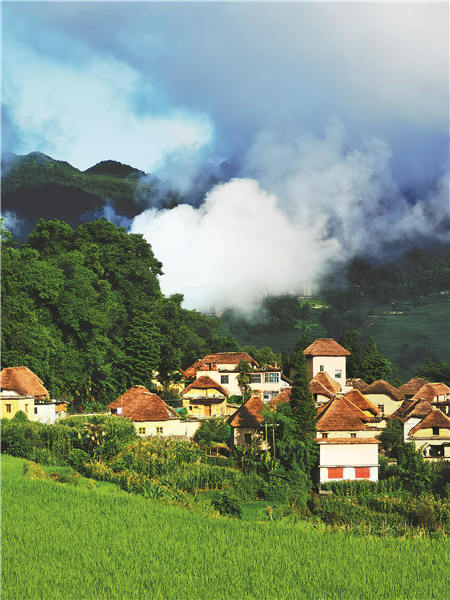

New attraction
From 1995 to 1997, as a visiting scholar, Bao was able to exchange ideas with dozens of distinguished international tourism professors and experts in Canada and the United States. He was inspired by their ideas and delivered innovative methods to deal with practical problems.
Bao once heard about the tourism area life cycle theory proposed by the geographer Richard Butler, who has taught on tourism in Canada. Drawn on the theory, Bao diagnosed the stagnant growth in tourism numbers at Danxia Mountain in the northern Guangdong, in 1992.
"I figured the mountain resort needed to develop new resources to break the bottleneck and attract more visitors," Bao says.
Local authorities followed his instructions and developed a new national attraction that covers an area of 3.5 square kilometers on the mountain. The destination has since then received about 1 million visitors annually, as opposed to 200,000 before.
Bao has also played an important role in transforming Yangshuo county of Guilin, in South China's Guangxi Zhuang autonomous region, into a tourism hot spot worldwide.
When residents were fighting for shares of the riverboat ticket income in the 1990s, he noticed the fundamental problem was that the county failed to retain guests after they had done the cruise along the Lijiang River.
Yangshuo boasts stunning natural sceneries, and Bao then alerted local authorities that it was lack of accommodation and catering services that failed the local tourism development.
He has made a point of conducting investigations, especially in Yunnan and Guizhou provinces, and often gained knowledge that was not found in books during the process.
"Being down-to-earth and conducting in-depth research is crucial," Bao says.
"I began with practical issues, which has influenced my research over the past few decades. It is fair to say that most of my research achievements have been derived from China's reality.
"My value is about using my knowledge for the benefit of the people," Bao says.
He was among the first to propose government intervention in historical villages with tourism development potential, when studying Xidi and Hongcun ancient villages in Anhui province that were listed as a World Heritage Site in 2000.
"Without it, commercialization is likely to go overboard. For example, aboriginal villagers might have to move," Bao says.
He also called attention to giving tourism yields back to locals who have helped to create the attractions, so the community in the tourism zone is better motivated to join and upgrade the destination management.